Will “Trump’s Plan” Succeed in Achieving a Ceasefire and Peace?
U.S. President Donald Trump’s plan to establish a ceasefire in Gaza faces complex challenges, including Hamas’s stance and the plan’s own structural and organizational weaknesses, making its implementation difficult. Although presented as a comprehensive framework to end the war, Hamas’s response and the U.S. welcome of it have effectively dismantled the plan’s unity, turning it into a gradual approach that begins with releasing detainees in exchange for halting military operations, while postponing the remaining provisions to later negotiation phases. The plan also falls short of addressing Gaza’s urgent humanitarian needs, which risks triggering indirect waves of displacement. Given the plan’s complexity and the failure of previous gradual approaches, the future of the war and the fate of the Gaza Strip remain open to multiple scenarios.
by STRATEGIECS Team
- Release Date – Oct 5, 2025
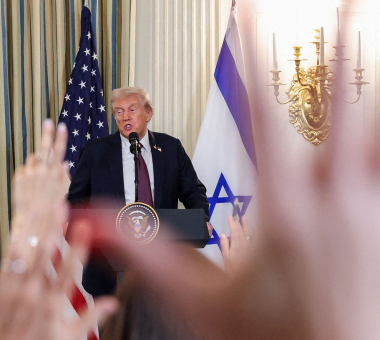
Editor’s Note: This paper was published on October 5, 2025, and its first scenario indicated that the likelihood of completing the first phase of the plan was considerably high, while the chances of success in the subsequent phases were expected to decline due to political and battlefield complications. On October 9, 2025, Israel and Hamas agreed to the first phase of Trump’s plan for Gaza, which includes a ceasefire and the release of detainees — a first step toward ending the war.
On September 29, U.S. President Donald Trump unveiled a comprehensive plan aimed at establishing a ceasefire in the Gaza Strip and achieving long-term peace between Israelis and Palestinians. The 20-point plan outlines phased measures to end the war, most notably the release of Israeli detainees held by Hamas in Gaza and the gradual withdrawal of Israeli forces to within the buffer zone. It also includes organizational and administrative arrangements for the post-war phase, covering security, political, and economic aspects, as well as reconstruction.
Within hours of its announcement, the plan received broad regional and international support and was approved by the Israeli government. On October 4, Hamas partially endorsed it. Although the plan is considered the most promising compared to previous negotiation frameworks and proposals, it does highlight challenges and complexities that could hinder its implementation or disrupt its course during execution.
Features of “Trump’s Plan” to End the War
“Trump’s Plan” is considered the second of its kind among U.S. presidential initiatives aimed at ending the war in the Gaza Strip. It was preceded by “Biden’s Plan” for stability in the Middle East, announced on May 31, 2024, which faced numerous complications that prevented its implementation. Despite similarities in several points and objectives, the differences in context and circumstances between the two plans were evident. For instance, “Trump’s Plan” was introduced unilaterally, without reliance on a negotiated framework, serving as a continuation of the unilateral track of U.S. proposals—similar to the “Comprehensive Deal” U.S. Special Envoy to the Middle East Steve Witkoff introduced August 2.
In addition, “Trump’s Plan” combines the goal of ending the war in the Gaza Strip with post-war arrangements within a unified framework—thus moving beyond the three-phase model that characterized most previous proposals, particularly “Biden’s Plan.” This peace plan begins with an immediate ceasefire, followed by Hamas’s release of all Israeli detainees held in the Gaza Strip (both living and deceased) within 72 hours.
This step serves as the cornerstone for implementing the remaining provisions. The first step is to be followed by Israel’s release of 250 Palestinians serving life sentences, in addition to 1,700 residents of Gaza who were arrested after October 7, 2023. For every hostage released, Israel will release the remains of 15 Palestinians from Gaza. The plan also stipulates the entry of humanitarian aid—to be delivered through the United Nations, its agencies, and the Red Crescent—in quantities meeting at least the minimum levels agreed upon in the January 19 multi-phase ceasefire and hostage deal that was broken by renewed Israeli airstrikes on March 18.
Regarding post-war arrangements, the new plan excludes any role for Hamas in governing the Gaza Strip but grants amnesty to every member who commits to peaceful coexistence and disarmament. It also provides safe passage for those members wishing to leave Gaza and reside in host countries.
This plan includes conditions for the surrender of weapons and the destruction of all military infrastructure, including tunnels and weapons production facilities. As an alternative to Hamas’s rule, the plan proposes the establishment of a non-political Palestinian technocratic committee and an International Peace Council composed of global leaders.
It also calls for the deployment of a temporary International Stabilization Force (ISF) to support newly trained Palestinian police forces in parallel with the gradual, three-phase withdrawal of the Israeli army until it is repositioned within the buffer zone.
If Hamas rejects the plan, Israeli military operations will continue with U.S. support as the plan is implemented partially in areas under Israeli army control, which will be handed over to the temporary ISF. Those areas will see an expansion of aid distribution operations alongside reconstruction projects.
Context and Timing
“Trump’s Plan” was aligned with the battlefield context of the war and shaped by regional and international demands—both official and popular—for an end to the fighting. On one hand, the plan’s contents directly reflect the outcomes of Israeli military operations, specifically the two versions of “Operation Gideon’s Chariots” which the Israeli government and military promoted as the final phase of the war and which are closely linked to the contours of the post-war period: ending Hamas’s control and establishing an alternative Israeli military governance structure.
Both operations involved the displacement of hundreds of thousands of Gaza residents, from Gaza City and Khan Younis, toward the safe areas in Rafah in the far south of the Strip. Thus, the substance of Trump’s proposal mirrors ready-to-execute military plans rather than proposals for negotiation, with the possibility that its goals could be achieved by force if Hamas rejects it.
Nevertheless, the continuation of Israeli military operations recently fueled regional and international official and popular opinion against Israel, triggering a growing international campaign to oppose the war. On June 21, nine European countries, including Belgium, Spain, Sweden, and Poland, submitted a request to halt trade cooperation with Israel and explore alternatives for commerce with Israeli settlements. In September, the European Commission proposed to the European Council the imposition of “strict” sanctions on Israel, including the suspension of its trade privileges. Alongside these collective European measures, individual European actions were also taken, most notably Germany’s ban in August on arms exports to Israel.
At the popular level, protests that began among university students and activists in the United States and Europe extended to labor unions across Europe. These unions, particularly in Italy, began turning their demands to halt arms transfers to Israel into concrete actions. Italian port and airport workers carried out partial strikes and, on several occasions, blocked weapons shipments. The most recent occurred in early October when workers at the Port of Ravenna prevented two trucks loaded with weapons from entering the dock area.
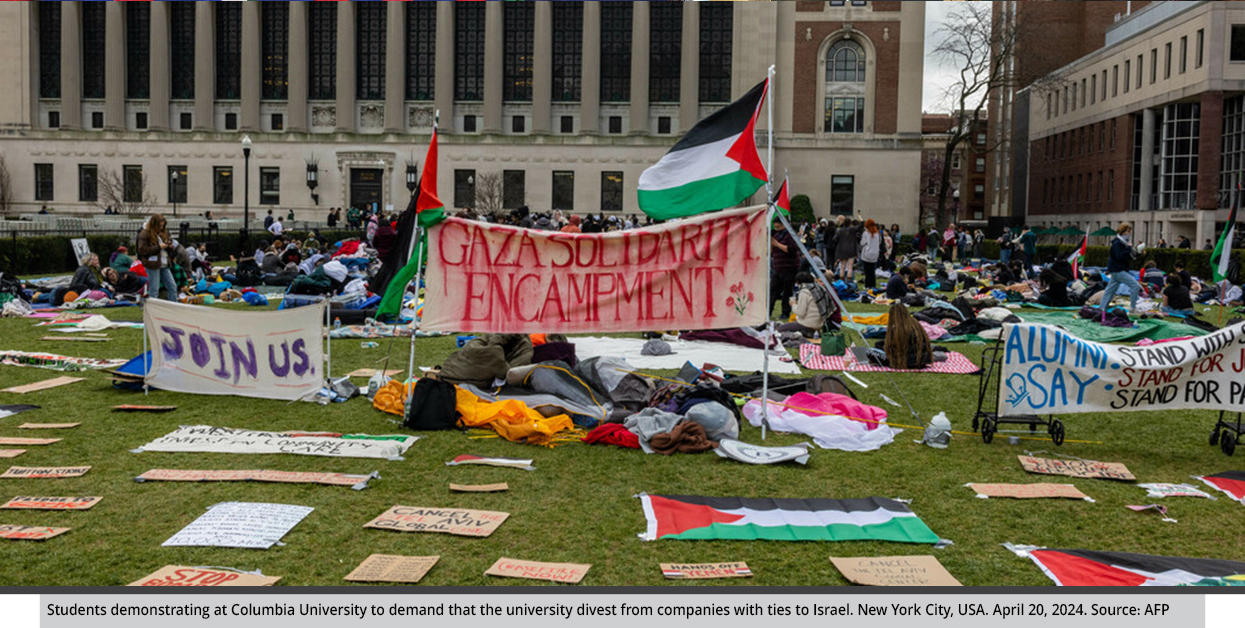
On the other hand, the Israeli military strike against Hamas’s negotiating delegation in Doha, Qatar, on September 9 heightened Arab concerns over Israeli conduct in the region and increased U.S. and Israeli worries about the stability of peace agreements. These concerns were further intensified following the September 15 “Emergency Doha Summit” and the extraordinary session of the Gulf Cooperation Council’s Supreme Council, which tasked the Joint Military Committee with assessing sources of threats. The situation was further complicated by overlapping conflicts between the Middle East and South Asia following the Saudi–Pakistan defense agreement, signed September 17, that added a regional dimension to the consequences of the Gaza war and deepened the entanglement of interests and alliances in the region.
Thus, “Trump’s Plan” emerged as a U.S. response and an Israeli acknowledgment of these pressures, with Israeli Prime Minister Benjamin Netanyahu admitting that Israel faces a “kind of isolation” due to the ongoing war in the Gaza Strip. The plan’s peace-related points also connect to the growing international campaign for recognition of the Palestinian state, most recently marked by France and Britain—Israel’s historic allies—recognizing it following the September 23 “Two-State Solution” conference at the United Nations. This aligns with the political narrative that the U.S. president has repeatedly sought to promote, portraying himself as a “peacemaker.”
“Trump’s Plan” from the Perspective of Its Details
The contents of the plan reflect the vision and approach of Trump’s administration from the very beginning. It appears highly responsive to Israeli demands, granting Israel the green light to shape the post-war landscape unilaterally, without opposing Israeli plans to occupy the Gaza Strip, provided a practical alternative to Hamas is in place. The plan also aims to resolve other political and economic issues, including reconstruction and the establishment of an alternative governance structure, while leaving open the possibility of a two-state solution and the eventual return of Gaza to Palestinian rule. In this context, the contents of “Trump’s Plan” can be read as closely aligned with this approach.
Regarding the first issue, the plan lacks clear timelines for a highly complex and intricate matter: organizing the withdrawal of the Israeli army from the Gaza Strip and the period for its redeployment within the buffer zone, which was expanded during the war. This is a pivotal issue and one of the main factors shaping Hamas’s stance toward the plan.
The second issue concerns reconstruction, a complex process that requires coordinated international effort, ensuring the involvement of diverse technical and engineering expertise and providing the necessary tools and technologies to address a highly complicated scene of destruction, including widespread rubble, toxic materials, unexploded ordnance, and human remains. Reconstruction efforts are also contingent on securing substantial financial resources, posing another challenge to implementation.
The matter becomes even more uncertain given the provision allowing Gaza residents who wish to leave the Strip to do so. In light of the expected delays in reconstruction and economic recovery, this clause maintains the potential for displacement—but this time in a “voluntary” form.
The third issue is the plan’s overall timeframe. It assumes it will begin immediately once Hamas announces its acceptance, but realistic implementation will take many years, even if there are no political or security obstacles. By its nature, the plan will produce subsidiary plans and will require the formation of committees and multiple international arrangements—whether to form the technocratic government, establish the temporary international force, revive the local economy, oversee the surrender and destruction of weapons, or manage the relocation of Hamas leaders who wish to leave.
Moreover, the plan does not clarify the legal framework that would authorize the “Peace Council” to exercise its functions in governing the Gaza Strip. Assigning governance and administrative responsibilities to an external body—whether an international council or a foreign force—necessarily requires subjecting the Strip to the rules of war and internationally recognized military occupation, as stipulated in United Nations charters.
This is the same framework previously used to establish the Coalition Provisional Authority led by then U.S. Presidential Envoy Paul Bremer in Iraq between April 2003 and June 2004. The council’s functions remain particularly unclear, especially given the presence of a Palestinian technocratic government and the leadership of Trump alongside former UK Prime Minister Tony Blair, suggesting a move to administratively and geographically separate Gaza from the broader Palestinian political and organizational framework. This is further underscored by the plan’s lack of confirmation regarding the future role of the Palestinian Authority in managing the Strip.
On the other hand, the plan’s complex issues require broad international consensus and potentially active participation from major global powers, particularly regarding the need for technical expertise and specialized equipment. However, the most critical aspect is the necessity of providing the plan with international legitimacy, which could push its points into a sphere of competition and polarization among major powers, turning some of its arrangements into points of polarization on the international stage.
Considering all these issues, each of which constitutes a challenge in its own right, mere acceptance by Hamas and implementation of the plan on the ground cannot, in any case, guarantee its success, given the scale of the surrounding political and battlefield complexities.
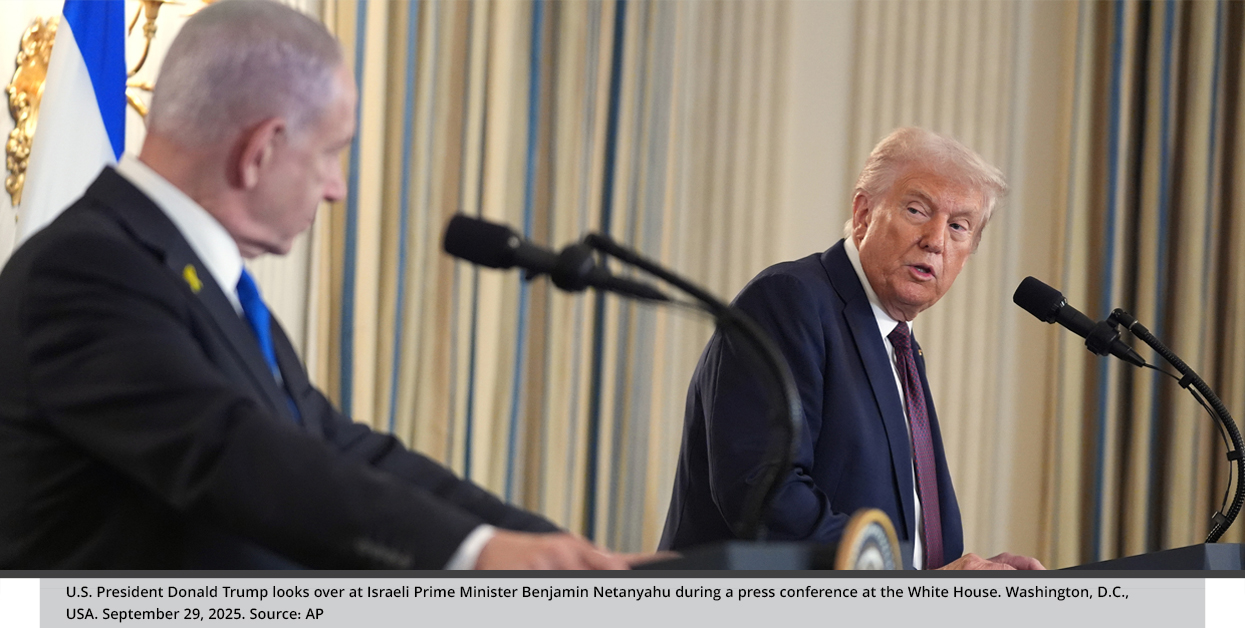
A Detailed Reading of Hamas’s Approval
Examining Hamas’s response, as reflected in its official statement on October 3, requires looking from multiple angles, including the context prior to the statement, its content, and the rapid response following it. Before Hamas released its statement, Arab and Islamic leaders from Egypt, Jordan, the United Arab Emirate, Saudi Arabia, Qatar, Türkiye, Pakistan, and Indonesia met with Trump on September 23, reviewed the plan’s details, and expressed full support in a joint statement by their foreign ministers.
This means that Hamas’s rejection of the plan would not only face diplomatic isolation but could also encounter a clear withdrawal of support from its regional allies—especially Qatar and Türkiye—and possibly Egypt stepping back from its role as a main mediator. Such circumstances would close off any future negotiating avenues for Hamas to exit the war, leaving the movement to bear its consequences.
Moreover, the broad regional and international support for the plan limits Hamas’s ability to maneuver within its provisions, particularly regarding guarantees related to the “post-release” phase of the Israeli detainees. Hamas is aware that the plan’s provisions are closely linked on the ground to Israeli military operations, leaving the movement’s capacity to confront them limited, if not entirely negligible.
From the perspective of its content, the preamble of the statement begins by acknowledging the efforts of Arab, Islamic, and international actors, as well as those of Trump, calling for an end to the war in Gaza, the exchange of detainees, the immediate entry of aid, the rejection of the occupation of the Strip, and the rejection of the displacement of the Palestinian people. This preamble is multi-layered and serves multiple purposes: on one hand, it offers positive praise, and on the other, it highlights key points of agreement that provide a prior explanation for Hamas’s approval—namely, the end of the war, the prisoner exchange, the aid delivery, and the rejection of military occupation and displacement.
The second part of the statement begins by reaffirming the key points of agreement that address Hamas’s objectives, particularly the end of the war and full withdrawal from the Strip. In this section, the movement announced its approval for the release of all Israeli detainees, both living and deceased, according to the exchange formula outlined in ’s proposal.
This formula is precise and highly cautious, yet it constitutes the cornerstone of the statement, giving all parties what they want without committing to detailed obligations. The statement does not declare full approval of Trump’s proposal as a whole; rather, it approves the most important point to Trump and Israel—the release of all detainees—while referencing the exchange formula in “Trump’s Plan. ”
It also affirms Hamas’s readiness to immediately enter negotiations through mediators to discuss the details. This sentence represents the statement’s primary purpose: respecting the timeline set by Trump (“immediately”), confirming the mediators’ role, and initiating negotiation rounds that will take time, thereby freeing Hamas from the pressure of rapid demands and non-negotiable conditions.
The statement further renews Hamas’s approval of transferring the administration of the Gaza Strip to a Palestinian technocratic body. Not based on Trump’s proposal, it was pointedly framed as “based on Palestinian national consensus and supported by Arab and Islamic backing”—a smart move to maintain balance in the statement and meet the minimum expectations of all parties.
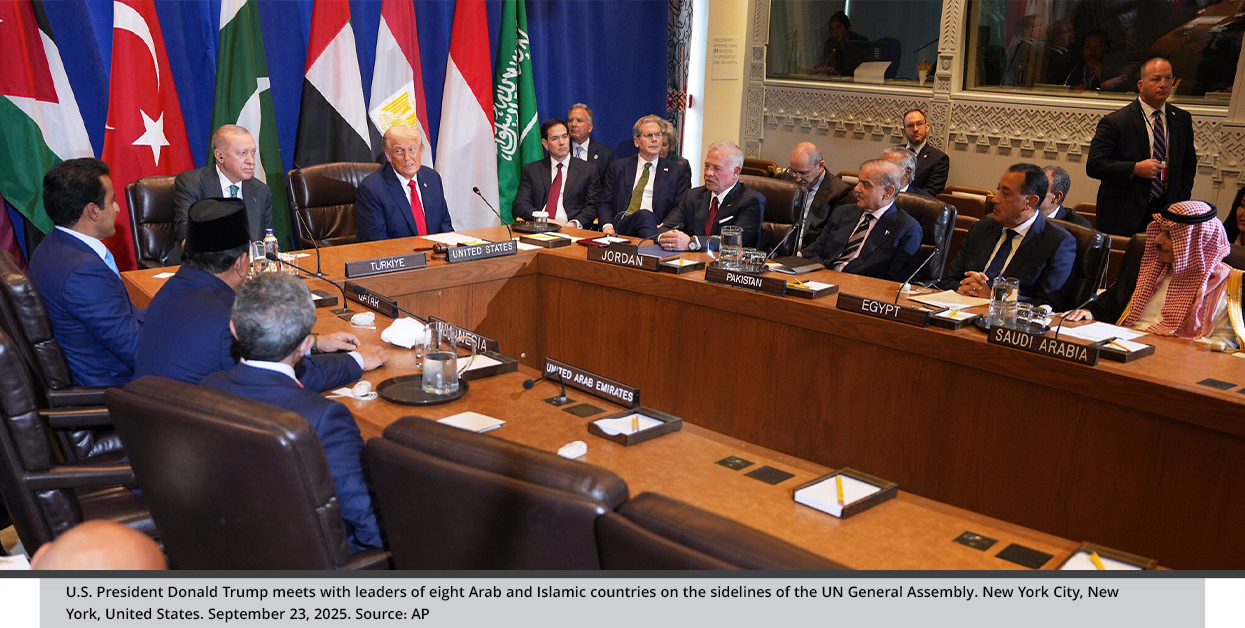
The conclusion of the statement is more general, noting that other issues in Trump’s proposal concerning the future of the Gaza Strip and the legitimate rights of the Palestinian people are linked to a comprehensive national position and based on relevant international laws and resolutions, and will be discussed through an inclusive Palestinian national framework in which Hamas will participate and contribute responsibly.
This dense closing paragraph does not reject the other issues in Trump’s proposal; rather, it returns them to national and international arenas while emphasizing Hamas’s role as an important component of any future Palestinian framework addressing these issues. The movement’s explicit recognition of the authority of international laws and resolutions is, in itself, a highly significant position, both now and for the future.
Hamas’s statement contains numerous indications of a flexible response to prior regional and U.S. understandings and pressures, thus ensuring Hamas’s engagement in implementing the first phase of Trump’s proposal regarding the release of all detainees (living and deceased) in Gaza.
This also makes it difficult for Hamas to later withdraw from committing to subsequent phases, though, even if it did, it would have little impact on the overall implementation of the proposal. This explains the rapid U.S. response, Israel’s quick reaction, and the subsequent accelerated procedural steps.
Less than an hour after Hamas delivered its statement, the U.S. president declared in a post on Truth Social: “Based on the Statement just issued by Hamas, I believe they are ready for a lasting PEACE. Israel must immediately stop the bombing of Gaza, so that we can get the detainees out safely and quickly!” The next morning, October 4, Netanyahu’s office issued an official statement: “In light of Hamas’s response, Israel is preparing to immediately implement the first phase of “Trump’s Plan” for the immediate release of all detainees.”
The White House then announced that Witkoff and Jared Kushner, Trump’s son-in-law, had traveled on October 4 to Cairo as part of the U.S. delegation to attend a quadrilateral meeting on October 5 between the United States, Egypt, Qatar, and Israel to set clear foundations for beginning the implementation of the first phase of the Trump’s proposal. Egyptian and Qatari mediators will facilitate indirect talks between Israeli negotiators and Hamas representatives, as reported by the U.S. news site Axios, with discussions set to begin October 6.
Future Scenarios for “Trump’s Plan”
Even though “Trump’s Plan” was presented as a comprehensive framework aimed at definitively ending the war, Hamas’s response—and the subsequent U.S. welcome of that response as a positive step—effectively dismantled the plan’s unity, turning it into a phased approach. Implementation now proceeds in stages, beginning with the release of Israeli detainees in Gaza in exchange for a halt to Israeli military operations and its army’s withdrawal to its initial lines. The remaining provisions will be deferred to later negotiation phases.
Given the plan’s inherent complexity and the historical difficulties of phased negotiations, the future of the war and the fate of the Gaza Strip remain open to several potential scenarios.
Scenario One: Success of the Plan and Progress Toward a Permanent Ceasefire
The success of Trump’s proposal and the advancement through its stages toward a comprehensive ceasefire and post-conflict arrangements depends on active support from international and regional powers, primarily the United States, as well as the cooperation of Israel and Hamas despite their reservations—particularly in light of the escalating human and material costs borne by both sides as the second anniversary of the conflict approaches.
Although Israel has achieved battlefield gains inside the Gaza Strip and recorded tactical successes against elements of the so-called “Axis of Resistance,” particularly Iran, it now faces a severe strategic crisis, reflected in growing Western opposition to the war, both among the public and at official levels in several Western capitals.
Meanwhile, Hamas faces an extremely complex on-the-ground reality, with estimates indicating that it no longer retains its former organizational capabilities, especially after losing thousands of fighters and senior military leaders in Gaza. This undermines its ability to continue the confrontation at the same intensity and exposes it to increased pressure from regional supporters of the plan, notably Türkiye, Qatar, and Egypt, which is difficult for the movement to resist.
If Hamas’s approval of the plan is partial, the rapid U.S. and Israeli response reflects a strategic assessment: implementing the first phase of the agreement—which includes the release of Israeli detainees—would strip Hamas of its strongest and most influential bargaining card. Once this card is lost, Hamas’s ability to maneuver or impose new conditions in subsequent phases would be minimized, placing it in a weaker negotiating position and potentially almost entirely outside the sphere of influence.
Consequently, its participation in the first phase becomes conditional and dependent on the balances imposed by the key actors, rather than on Hamas’s internal considerations or its own weight in the negotiations.
Scenario Two: Partial Success of the Plan and Stalled Progress
The implementation of the plan is not without fundamental challenges and real obstacles, which reduce the likelihood of its full success and make comprehensive achievement unlikely under current conditions. The plan’s general nature and vague wording leave it open to differing interpretations among the parties, creating the potential for subsequent disagreements over implementation mechanisms and the agreement’s substance.
Moreover, the absence of a comprehensive framework that would allow the plan to serve as a complete roadmap for ending the war and managing post-war arrangements undermines its political and practical enforceability. Given the complexities of the battlefield and the phased negotiation process, which is susceptible to changing developments, the possibility of alterations to the plan’s content remains present.
Reinforcing this assessment is Hamas’s statement, which, while granting partial approval, indirectly signals rejection of most of the core provisions in the “Trump Plan,” particularly those related to the surrender of weapons and post-war governance and administrative arrangements in Gaza. In contrast, Israel continues to insist on its declared objectives, foremost among them dismantling Hamas’s military capabilities and imposing new security and administrative arrangements that reshape the Gaza landscape in line with its strategic vision.
Thus, while the likelihood of completing the first phase of the plan is relatively high, the pace of implementation gradually decreases in subsequent phases, as the chances of completing each following stage or provision decline significantly due to increasing political and battlefield complexities and the widening scope of disagreements over substantive details that require deeper consensus and stronger guarantees.
In this context, the course of the war is likely to lead to a state of battlefield stalemate and political deadlock, where negotiation rounds turn into a cycle of delays and conflicting interpretations. Continued stagnation places the Gaza Strip before two possible paths, with no third option: either a return to open warfare and military confrontation, or a slide into a fragile and unstructured reality, in which Gazan society relies on humanitarian aid without a stable governance system or an administrative structure capable of managing public affairs. In both scenarios, Hamas’s ability to control the internal situation appears to be diminishing, with its organizational influence eroding and mounting political and battlefield pressures encircling it from both inside and outside.
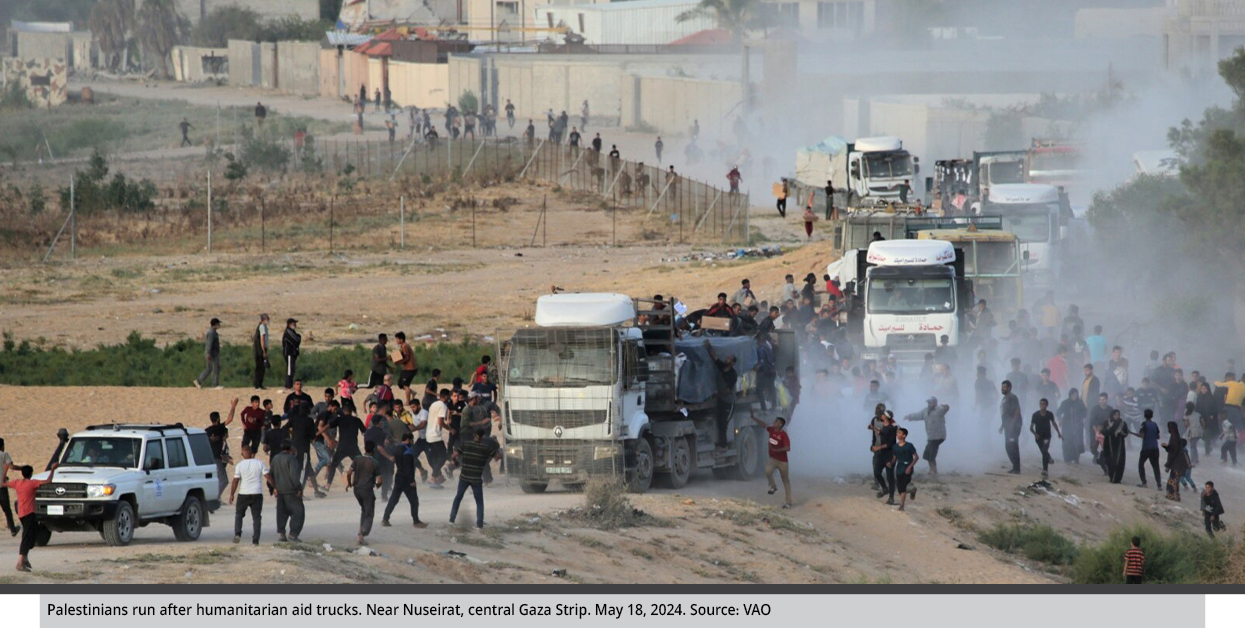
Scenario Three: Complete Failure of the Plan and a Return to War
The phased negotiation pattern, from the outbreak of the war up to the announcement of “Trump’s Plan,” reflects a recurring pattern of complexity and rigidity in positions, alongside a widening gap of doubts and misunderstandings among the parties. These characteristics have not been limited to the Gaza track alone but have also affected other regional issues, most notably the stalled negotiations over Iran’s nuclear program between April and June 2025, which preceded a direct U.S. military strike on Iranian nuclear facilities.
The ceasefire agreement in Lebanon signed in November 2024 also demonstrates the limits of such arrangements, as it has so far failed to achieve its primary objective of disarming Hezbollah, which continues to rely on buying time and delaying implementation. Accordingly, the same challenges appear to be affecting the negotiation process related to the Gaza Strip, with current indicators signaling the potential for the next political process to stall due to the repetition of the same patterns: preconditions, rigid positions, and a lack of clear and binding enforcement guarantees.
In fact, Hamas’s response reveals a clear attempt to replicate the Hezbollah model: prioritizing a ceasefire first, followed by a prolonged negotiation process that allows it to delay implementing the surrender of weapons while retaining its military capabilities, even if it does not participate in governance and administration within the Gaza Strip.
This presents a strategic concern for Israel and adds complexity to the security and political arrangements for the post-war phase, which Israel seeks to avoid by all means. Netanyahu has stated that in the second phase, Hamas’s and Gaza’s weapons will be disarmed either through diplomacy or military action.
In contrast, Israel seeks to maintain its security control in the Gaza Strip, including a military presence in strategic locations. Current data indicate that a map updated to reflect the “Trump Plan” preserves Israeli control over Rafah, the Philadelphi Corridor, and two-thirds of Khan Yunis, as well as full control over Beit Hanoun and Beit Lahia in the north. Hamas is almost certain to view this as a form of military occupation.
The firm stances of Hamas and Israel on these issues have been a key factor in the continuation of the war up to this point. This deadlock increases the likelihood of renewed military confrontation if the negotiation process fails or the implementation of any of its phases collapses. The absence of political flexibility, the deep divisions over priorities, and a lack of mutual trust make any potential agreement inherently fragile and susceptible to rapid collapse at the first field or political test.

STRATEGIECS Team
Policy Analysis Team
 العربية
العربية